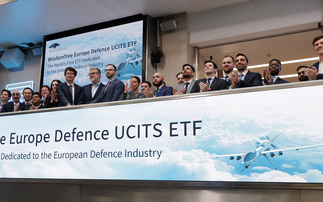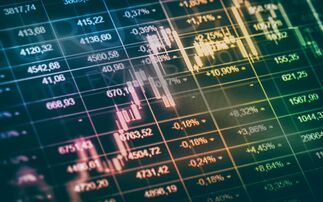Fund buyers have called for more transparency on passive fund costs not contained within the ongoing charges figure (OCF) - even as a price war cuts headline fees to record low levels.
The price war involving both exchange-traded fund (ETF) providers and index funds was restarted again last week when Legal & General Investment Management (LGIM) cut fees on a swathe of its tracker products.
Separately, Investment Management Association (IMA) data released last week showed tracker funds alone now account for 10.8% of UK retail assets under management, up a full percentage point from six months ago.
ETF sales are not included in the analysis.
While investors have long been warned of the need to examine fees outside the headline charge, industry figures complain that making like-for-like comparisons using such data can prove at best difficult, and at worst impossible.
The problem is not just in comparing ETFs with index funds, but also within the ETF space itself, according to Richard Philbin, CIO at Harwood Multi Manager.
"It can be an absolute nightmare, even for ETFs tracking a simple index. It should be the easiest thing in the world to understand, but there are so many moving parts, which does not make the fund selector's job any easier," Philbin said.
"There is not one agreed way of measuring these things and, because of this, you have differences in returns and performance."
Ben Seager-Scott (pictured), director, investment strategy at Tilney Bestinvest, said comparisons are becoming more relevant as headline fees fall.
"As ongoing charge figures for ETFs start dropping, there will be much more focus on bid/offer spreads. Other costs start to become much more dominant when you are trying to squeeze out the last little bit of return. But it is quite easy to pick the wrong data point," he said.
Difficulties in comparing costs have led one consultancy firm, Koris International, to launch a new service last month in a bid to more accurately assess rival ETFs' charges.
However, even this TrackInsight service remains a work in progress, according to Koris CEO Jean-René Giraud, who decided to launch the service after several years battling a "lack of transparency".
"Missing NAVs, wrong NAVs, missing dividends, NAVs published on public holidays, discrepancy between the fund and the index holiday calendar, one-day lag, change of reference index, adjustments with inconsistent FX-rates, wrong NAV currency….
"This is what we have to live with every day when analysing ETFs."
As Giraud implies, there are myriad methodological factors to consider even when looking at tracking error, recognised as one of the more reliable ways of investigating whether an ETF is performing as it should.
Figures based on the market price of an ETF show much greater volatility than those based on the NAV, for example.
Antoine Lesne, head of ETF sales strategy EMEA at State Street Global Advisors, said: "When the data is based on market prices, there are issues with dividend payments and whether the fund is trading at a premium or discount, which creates volatility.
"But some investors look at different data points."
Tracking difference
Tracking difference - the difference between the return of the ETF and the index it is tracking - can in theory offer a simpler comparison, but fresh confusions arise here too.
Data from TrackInsight shows a number of providers display positive tracking difference on their S&P 500 and Eurostoxx 50 ETFs, meaning the funds are actually outperforming their benchmarks.
This anomaly can result from revenues gained from stock lending, sampling, replication - where the managers chooses a selection of stocks to try to mirror the return of the whole index - and ETFs' tax benefits.
The first two factors pose more questions than they answer, according to Philbin: "A passive fund that outperforms its benchmark is not passive", he said.
Trackers vs ETFs
Making like-for-like comparisons between trackers and ETFs is also difficult. The principle issue centres on the fact that both index funds and ETFs price at certain point in the day, ahead of the index close.
This valuation discrepancy can be resolved for ETFs because they trade on the secondary market - so performance data can be found via the exchange.
For trackers, however, it is more difficult.
One wealth manager told Investment Week their firm had to request certified data from the index fund provider regarding the price of the underlying assets."It is not as simple as picking a fund and moving on. This should be a key part of due diligence," the source said.
Click here to view full-size table
















